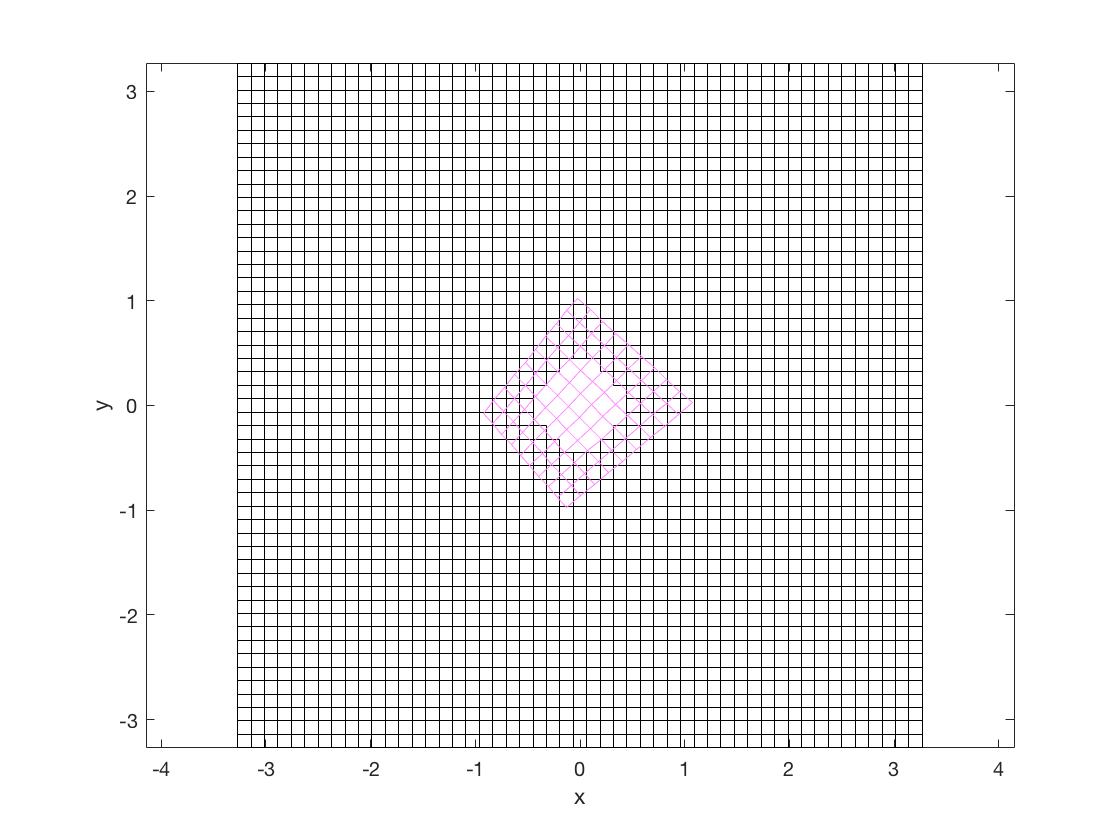Section: New Results
Overset grids
One of the difficulties in the simulation of a fluid flow problem is the representation of the computational domain with a static mesh. As a matter of fact, not only the geometry could be particularly complex in itself, but it could change during the simulation and this necessary involves an in itinere geometrical adaptation of the mesh, with a consequent high computational cost. One of the ways to overcome this problem is to use multiple overlapping mesh blocks that together define a Chimera or overset grid. Once the different mesh blocks are generated, they are properly composed by the creation of holes (hole cutting) and, consequently, an overlapping zone between two overlapping blocks is defined. Figure 13 shows a Chimera grid in the computational domain ; in black there is the background mesh, in blue the foreground mesh. In particular, the foreground mesh can move and deform (consequently, the hole in the background mesh can change its configuration). The overlapping zone is necessary for the the communication and data transfer from one mesh to another. These operations are possible through an appropriate definition of local stencils of cells, both within and at the border of the individual blocks.
The Navier-Stokes equations for incompressible flows are going to be approximated through a projection method (Chorin-Temam), for this reason we have studied two Finite Volume (FV) solvers, for the pure diffusive equation and the unsteady convective-diffusive equation, on Chimera configurations. The first numerical experiments were conducted on 2D problems. The order of convergence of the error of the mismatch between the exact solution and its FV approximation in - and -norms is 2.



